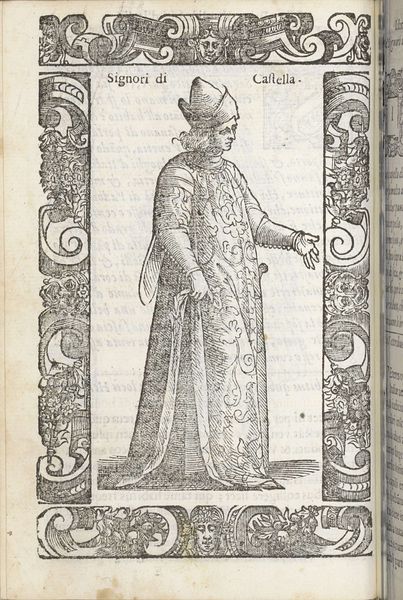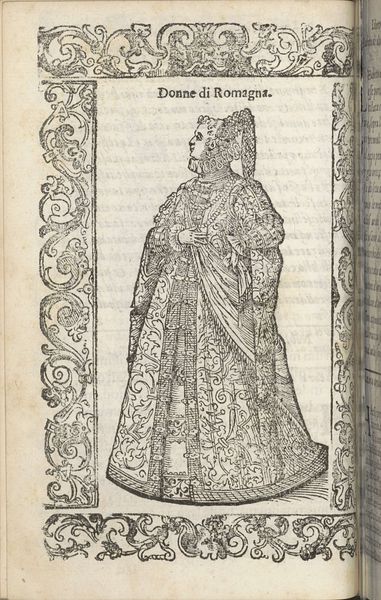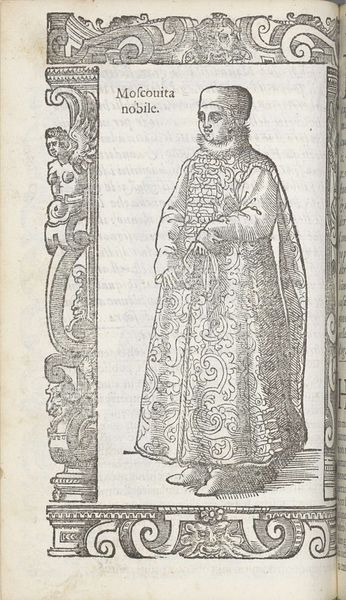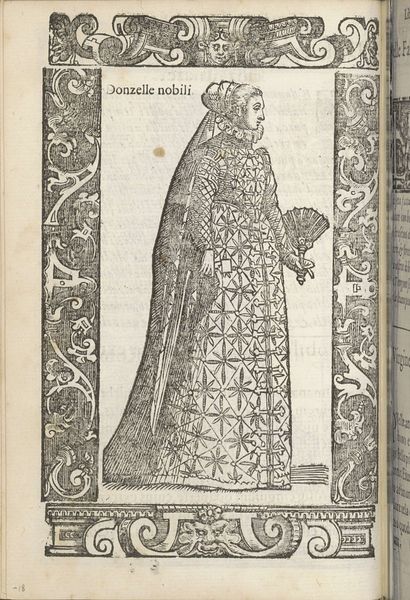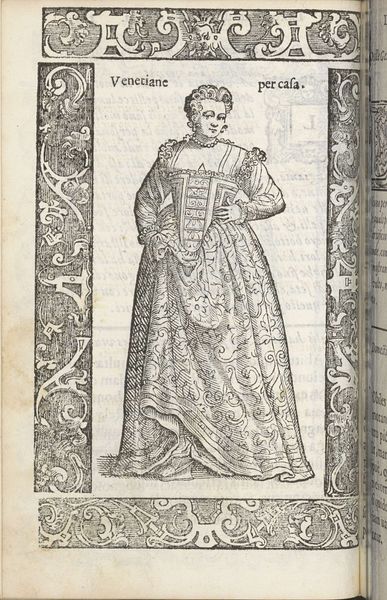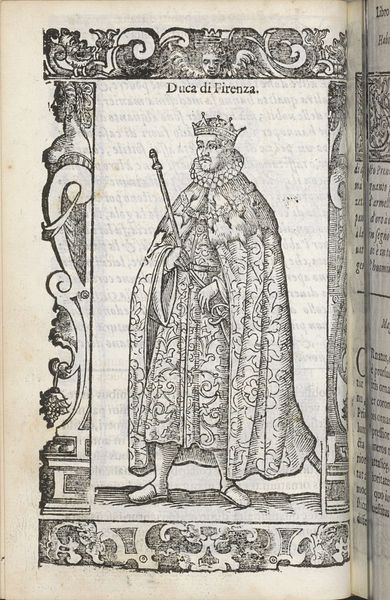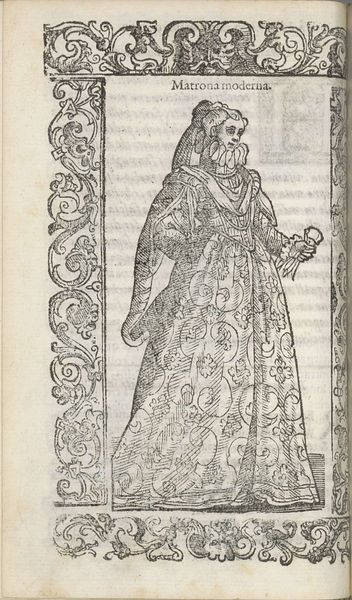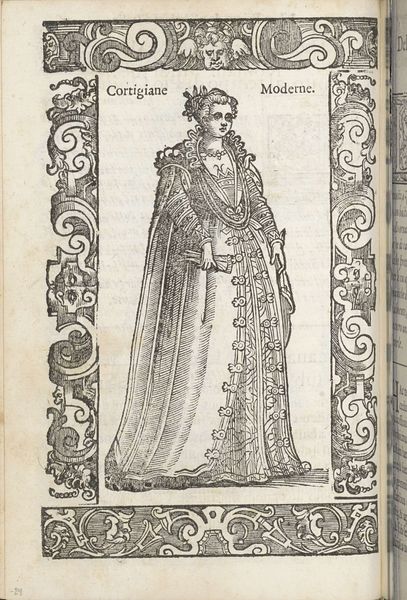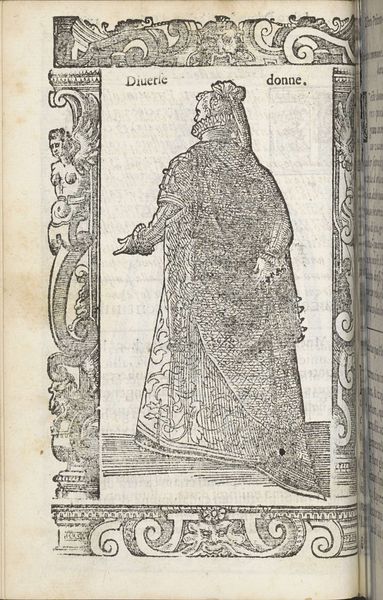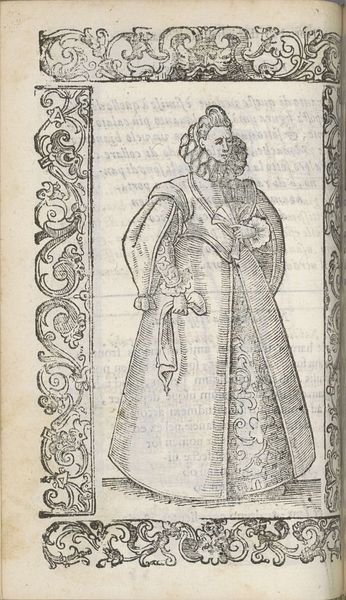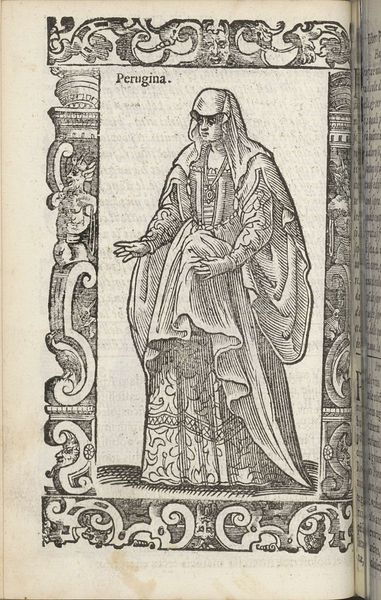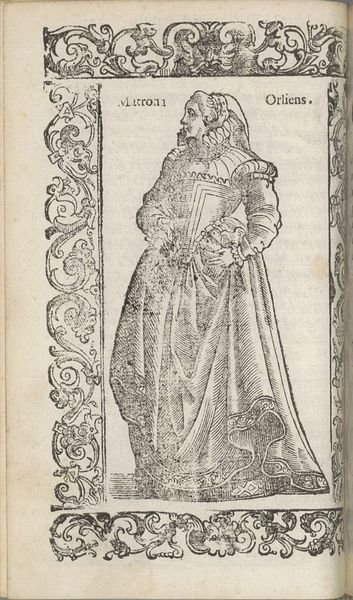
print, engraving
#
portrait
# print
#
11_renaissance
#
history-painting
#
engraving
Dimensions: height 167 mm, width 125 mm
Copyright: Rijks Museum: Open Domain
Editor: Here we have Christoph Krieger’s “Nobile da Pisa,” an engraving from 1598. It depicts a noblewoman, but the image feels almost like a pattern. What do you see in this piece, looking beyond its immediate representation? Curator: This print, for me, is a powerful artifact of cultural memory. The repetition of floral and curvilinear motifs speaks to the symbolic language prevalent in Renaissance fashion. The woman holds what appears to be a lily, which historically has represented purity and innocence, but also, potentially, female sovereignty depending on how that symbol evolved in Pisan heraldry. Consider the density of the ornamentation – what might it tell us about societal values and aspirations during that period? Editor: So, it's less about a specific woman and more about an ideal of nobility? The lilies certainly add a layer of meaning I hadn’t considered. Curator: Precisely! Think about how prints like this circulated. They weren't just portraits; they were disseminators of cultural values. They offered a template, if you will, for how nobility wished to be seen – and remembered. Note the careful construction of her dress: its symbolic patterns speak of a heritage interwoven with status. Editor: That’s fascinating! It reframes my understanding. I tend to see portraits as individual representations, but in this case, the symbols tell a broader story. I’ll never look at Renaissance portraits the same way again! Curator: It’s through examining these symbolic cues that we start to grasp the enduring impact images have on shaping identity, power, and cultural inheritance.
Comments
No comments
Be the first to comment and join the conversation on the ultimate creative platform.
